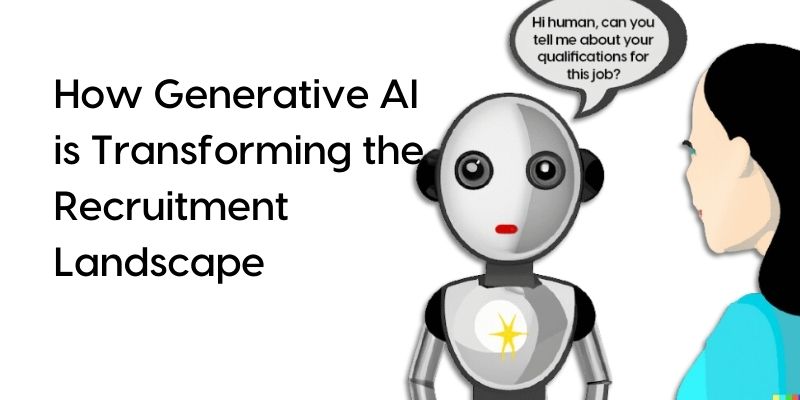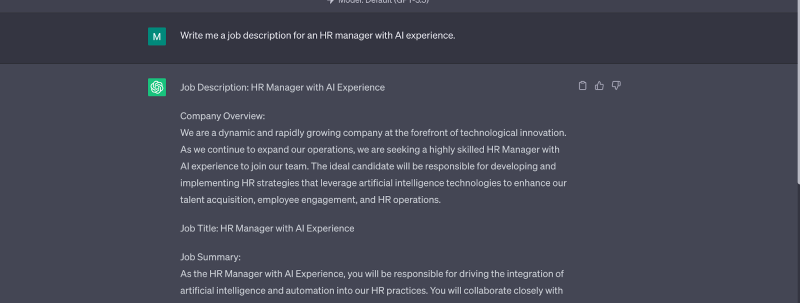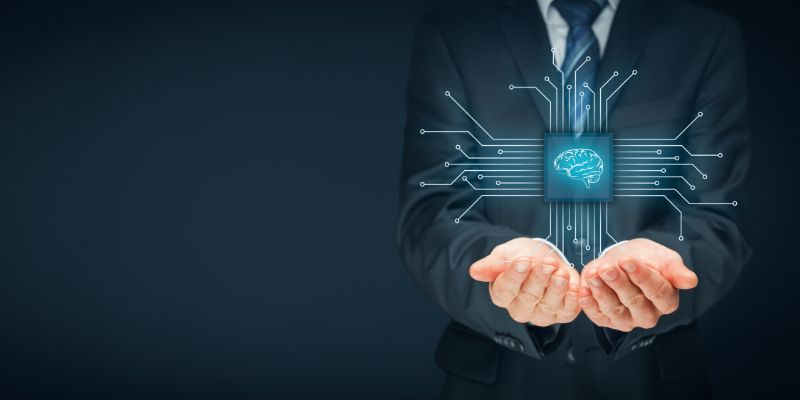
Generative AI is a fast-changing landscape with huge rewards as well as risks. It also has the potential to forever change the way people are hired.
In this blog, I’ll talk about the many steps of the hiring process and the potential for disruption by AI — much of which is already happening. AI will not just transform internal HR processes but will likely totally transform the recruitment industry as well. Maybe the decades-old name “human resources” could change as well. May I suggest “AI-enhanced resources?”
How generative AI works
Generative AI is trained on existing datasets to generate new data using deep learning algorithms. This technology excels at absorbing vast quantities of data, summarizing content, looking for patterns, and providing a human-like output.
Every process involved in hiring and onboarding employees has the potential to be enhanced or even totally replaced by generative AI tools with these capabilities. I believe that AI could actually make HR more “human” than the current status quo.
> AI/ML + HR: Do Opposites Really Attract?
To borrow an AWS term, if AI can do the “undifferentiated heavy lifting” in HR, humans can provide the personal touch and spend more time with the best candidates. Only time will tell, but in this case, it may not take much time with this rapidly developing technology. Let’s take a look at all the required steps of hiring and onboarding a new candidate — in chronological order — and then look at some ways generative AI may help.
Writing job descriptions
HR departments typically require job descriptions, something hiring managers struggle to produce quickly and accurately. For this reason, job descriptions are often generic documents — pulled and hastily edited from other posted jobs — that do little to attract the perfect candidate.
Generative AI can be a game changer here, quickly crafting job descriptions based on key attributes provided by hiring managers. In the example below, I asked ChatGPT to create a job description for an HR manager with AI experience, which would be an entirely new job category, yet it did a really good job of creating a first draft which I can then edit.

In fact, generative AI makes it possible to create incredibly granular job descriptions in seconds. I can quickly add things like “international experience, master’s degree,” or describe the department as a hybrid team, and instantly have a new job description.
At NerdRabbit, we’ve started exploring this use case to help customers automatically change job descriptions by weighting the skills, experiences, education, certifications, and other criteria for the particular role. This becomes especially powerful for short-term engagements, contract employees, or new roles in the company where an existing job description doesn’t totally apply. This could not only speed up the process but more accurately describe the job, thereby increasing the quality of the candidate pool.
Sourcing and screening candidates
In a typical hiring process, companies get job descriptions approved, post them, and then start sourcing candidates. Candidates might come from entirely organic sources like website traffic, LinkedIn, or other marketing efforts.
According to Zippia, an average job post receives 250 applications. Unfortunately, hiring managers know that most of these applicants won’t have the requirements for the job, with many of these applications being automated responses. The potential of AI is to sort through millions of resumes, social posts, applications, and job sites to find candidates who meet all the requirements of the job description, giving recruiting managers a targeted pool of highly qualified candidates.
> Ask the Expert: Using ChatGPT to Write Your Cover Letter
Companies have used AI for this very purpose for several years, with mixed results. Five years ago, Reuters reported that Amazon had scrapped an AI initiative because its system was biased. It seems that engineers hired in the past were mostly men, so the AI became biased in favor of male applicants in technical positions since that’s the historical data it was trained on.
But new technologies, including generative AI, have the potential to mitigate or eliminate bias while increasing speed and efficiency in the sourcing process — a subtle yet powerful difference. Instead of using AI to look at patterns in 10-year-old resumes and to filter and disqualify potential candidates, AI can be used to identify potential candidates that did not apply for the job, or may not have looked perfect on paper in real time.
Startups like PeopleGPT have launched AI search tools for this very purpose. After identifying candidates, generative AI chatbots like those being developed at NerdRabbit can communicate in multiple languages based on a candidate’s preference and screen candidates without the unconscious bias of a human screener. These technologies could allow HR managers to implement a more neutral analysis of candidates based more on their qualifications, leading to more diverse and inclusive hiring practices.
Conducting interviews
While writing job descriptions, sourcing, and screening can take a ton of time, interviewing can often seem all-consuming for a hiring manager filling multiple roles. Over the past few years, we have found that companies with internal recruiting teams average 15-20 interviews per job!
Managers may want to do initial phone interviews with up to 10 candidates, onsite interviews with three to four of those, and then have top candidates come back in for second or third interviews. The potential of AI is freeing up time for managers, especially in the initial phone interviews. AI can reduce interview fatigue and allow for more time spent with the best candidates.
AI can analyze spoken or written words for accuracy and grade candidates on their knowledge base. It can also evaluate body language and even voice tone to evaluate candidates’ culture fit, management potential, or presentation skills. For employers, this might seem like the Holy Grail. They can get a pre-vetted group of candidates, ranked by AI, without having to spend hours scheduling and conducting phone interviews with unqualified candidates.
Yet there are risks to this strategy. At the top of the list, many candidates may dread being “interviewed by a robot.” A recent CBS News article highlights this risk and offers tips to candidates faced with an AI interview.
Despite the risk of scaring away some great candidates, I believe that the efficiency gains will be too great to ignore for most companies. A recent survey from Resume Builder projected that approximately 40 percent of companies will use AI for job interviews by 2024.
AI could change recruitment for the better
Generative AI offers significant benefits in the recruitment field, and I believe we are only at the beginning of a massive change in the entire hiring process. Companies will be able to widen the pool of candidates while screening and interviewing them faster, reducing unconscious bias, allowing them to quickly identify the best possible candidates and spend more human time making sure there is a mutual fit. AI can aid and expedite, but the final decision will still lie with the hiring manager.

Related articles
Ensuring Cloud Security and Compliance with NerdRabbit’s Audits Pod
Ensuring the security and compliance of your cloud infrastructure is more critical now than ever. As companies migrate to the cloud, they face many challenges, from maintaining visibility and navigating complex solutions to evading sophisticated cyberattacks....
Optimize Your Cloud Strategy: Evaluating Your Cloud Team for Peak Performance
Having a skilled and well-aligned cloud team is essential for any organization aiming to leverage cloud technologies to their fullest potential. An optimized cloud team can drive innovation, reduce costs, and enhance overall business performance. But how do you ensure...
What Is Cloud Based Application Development?
Cloud-based application development has become a synonym with innovation and efficiency in software engineering. As technology continues to advance, the adoption of cloud computing has transformed traditional development practices, offering a new framework for...






